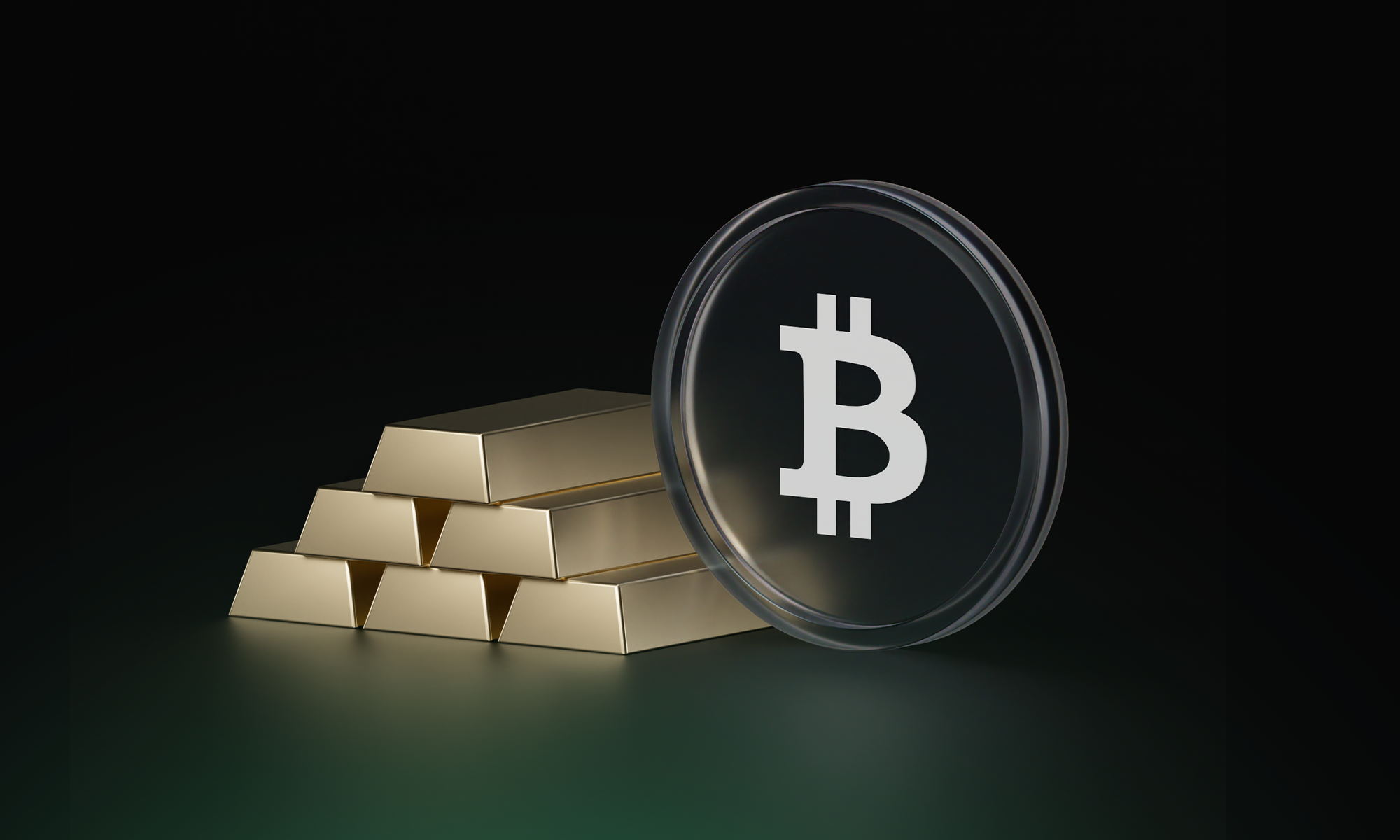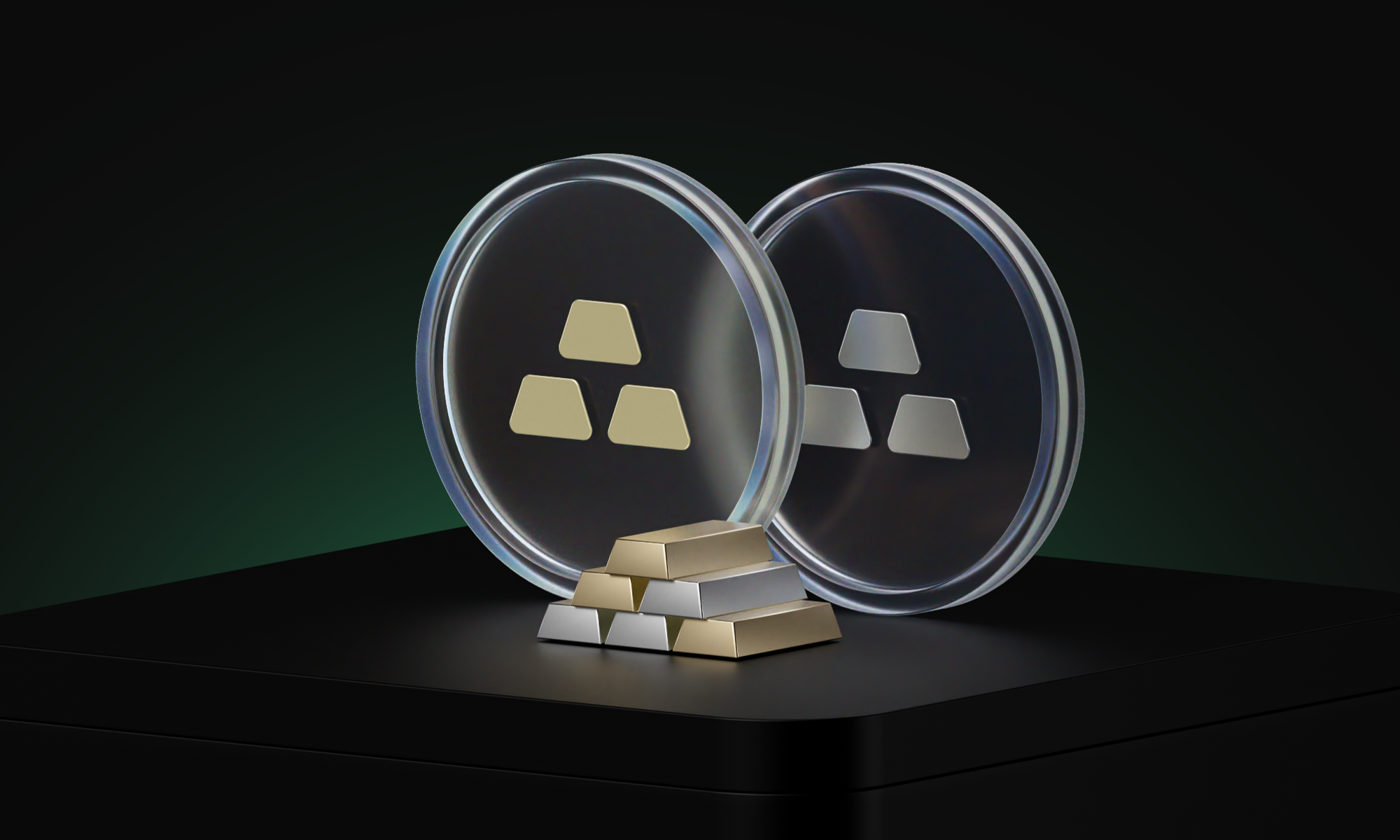A store of value protects your capital against monetary erosion and economic turbulence. It preserves your purchasing power, or even increases it, when other assets lose value. But what essential characteristics make an asset a reliable store of value? Scarcity? Resilience? Trust? A bit of all three. Gold has possessed these qualities for centuries. It's a safe-haven investment that doesn't yield income, but which is a pillar of defensive portfolios.
Among other traditional safe-haven values, real estate naturally comes to mind. "Bricks and mortar" preserve capital well, but also have the merit of generating income, offering tangible utility. Art represents another safe haven. Though certainly more exclusive, it is appreciated both for its resilience in the face of crises and for its fiscal and cultural advantages.
Created in 2009, Bitcoin also aspires to this status of digital gold. Its defenders highlight its digital scarcity (21 million units) and its decentralised network, disconnected from monetary policies. Trust is being built gradually, as adoption by institutions and the development of its ecosystem progress. While it has established itself as a financial asset, is it a good instrument for hoarding? Let's compare Bitcoin and gold on their status as stores of value.
Gold and Bitcoin: two assets, two trust models
Gold: a historical safe haven

Gold has long been the safe haven par excellence. It owes this status to several characteristics that have proven themselves throughout history:
The ability to preserve purchasing power over the long term. A quantity of gold that allowed the purchase of a cow 3,000 years ago (approximately 140 grams) is still worth the equivalent of a cow today (14,000$ at the current rate of 100$/g). Few assets can boast such stability through the ages.
A safe haven during major crises. During the Great Depression of the 1930s, demand was such that the American government had to restrict private ownership. When Roosevelt raised its price from $20 to $35 per ounce in 1934 (+70%), he merely confirmed its appeal in difficult times.
Effective coverage against severe inflation surges. Between 1971 and 1980, while the link between gold and the dollar was broken, the price of an ounce rose from $35 to $850 (+2,300%). During the same period, prices more than doubled.
Even today, gold demonstrates that it has lost none of its relevance as a defensive investment. Its price is breaking record after record, and has exceeded $3,300 in 2025. In a context of high inflation and trade tensions, some analysts even foresee $4,500!
Bitcoin: a newer asset
Much younger than gold, Bitcoin is already perceived as a diversification asset in its own right. In just over a decade, it has earned its stripes with a new generation of investors:
Its long-term performance is remarkable. Early investors who bet $100 on Bitcoin in July 2010 (at the price of $0.06) would today hold the equivalent of $136.7 million. Few investments can rival such a return!
Bitcoin has also shown surprising resilience. The number of times it has been declared dead is countless. This was the case, for example, after the 2017 bubble burst, which saw it plummet from $19,650 to $3,300 (-83%). But it has always returned to new heights thereafter, passing $60,000 again by April 2021. This ability to bounce back makes it a more resistant asset than it might appear.
Finally, the adoption of Bitcoin by major institutional players is confirmed. Listed companies such as Tesla and MicroStrategy have placed a portion of their treasury in BTC. Its integration into regulated investment products (ETFs, funds...) shows that its potential is being taken seriously.
BTC gains have been spectacular since 2023. It rose from $25,000 to over $100,000 in early 2025, before a correction to less than $80,000. These roller coasters certainly testify to its potential, but also to the challenges it still needs to overcome to definitively establish itself as a store of value.
Comparison of the two assets
Beyond their differences in age and nature (physical vs digital), gold and Bitcoin rely on radically different trust mechanisms.
For gold, trust essentially rests on reference third parties. States of course, but also financial institutions, storage specialists, etc. The security of an investment in gold therefore depends on the solidity of the chosen intermediaries.
For Bitcoin, trust is "distributed" among network participants. It is therefore imperative to understand how the blockchain works. One must take the time to understand its security mechanisms (proof of work, consensus devices) to grasp the guarantees offered.
Scarcity and supply mechanism
Gold: a natural asset with physical limitations
The value of gold as a reserve is fundamentally based on its physical scarcity. A natural scarcity that can be explained by three factors:
The available gold stock is limited. All the gold ever extracted (about 205,000 tonnes) would fit in a cube with 21-metre sides. For context, this represents the equivalent of barely 22 grams per inhabitant.
The annual production flow is low compared to the stock. Approximately 3,000 to 3,200 tonnes of gold are extracted per year. This means that mining production only adds 1.5 to 2% to the existing stock, which is very low. A complete halt to extraction would not have such a drastic effect on prices, especially since industrial recycling (jewellery, electronics) occupies an important place. It now represents more than 20% of the annual supply, returning more than 1,000 tonnes to the markets.
Extraction becomes more difficult and costly over the years. Easily accessible deposits are being depleted, forcing the exploitation of increasingly complex mines. Large deposits are becoming rare. The production cycle of a mine is very long, often 15 to 20 years from discovery to commissioning. The last major deposit to date is that of Hunan province in China (November 2024), but it would require digging up to 3,000 metres.
Bitcoin: a digital asset with programmed limitations
With Bitcoin, scarcity takes on a new dimension. It is no longer determined by geology, but written in the code. Bitcoin has been programmed with transparent rules that can be verified by everyone on its public blockchain:
The total quantity of bitcoins is limited to 21 million. There will never be more. This limit is mathematically guaranteed by the protocol, without depending on any authority. At the time of writing, nearly 19.84 million BTC have already been created, about 94.5% of the total.
The creation of new bitcoins follows a predefined schedule. This schedule is divided into periods of approximately 4 years. Every 210,000 blocks, the miners' reward is halved (an event called "halving"). Thus, the daily emission has gone from 7,200 BTC initially to 450 BTC since 2024. By 2140, all bitcoins will have been issued.
These are the reasons why Bitcoin is so fascinating. It appears that the supply of BTC does not depend on its price, or very little. Even if the demand for BTC were to increase tenfold, the network would continue to issue the same number of BTC each day. Such a decoupling between supply and demand is unprecedented for a monetary asset.
Another notable fact is that a portion of bitcoins is lost permanently when the private keys that allow access to them are misplaced. It is estimated that this concerns nearly 3 million BTC, reducing the actually circulating supply by that much. Unlike gold, a lost bitcoin is lost forever!
Comparison of gold and Bitcoin
We thus have two different logics of scarcity, which make these assets credible stores of value in the long term.
- The gold supply evolves slowly (1 to 2% per year), it can experience variations with discoveries of new large deposits. Rising prices favour recycling, which "returns" gold into circulation and balances the markets.
- Conversely, the supply of bitcoins is perfectly predictable and insensitive to price variations. The digital nature means that any lost BTC is lost forever. This accentuates its dynamic of rarefaction.
Risk profiles: volatility and behaviour in times of crisis
Gold: moderate volatility
Gold has shown an annual variation of between 13 and 18% over the last 10 years. It has proven to be more volatile than Government Bonds, but significantly more stable than Emerging Market Equities or Commodities. On a daily basis, its fluctuations rarely exceed 2 to 3%.
The most severe corrections were 45% in 1980-1982 and 44% in 2011-2015. This is far from the 80 to 90% crashes observed on certain stocks or cryptos.
This stability is linked to the diversity of participants. Gold simultaneously attracts central banks, sovereign funds, financial institutions, jewellery retailers, industrialists, and individual investors. Their time horizons and motivations are different: when some sell, others buy, dampening price fluctuations.
In a crisis, gold often adopts a two-stage behaviour. First, a reflex sale, followed shortly after by a marked rebound, as long-term investors take over. A pattern observed in 2008 and 2020.
Bitcoin: strong volatility, but decreasing
Since its inception, Bitcoin has displayed a typical volatility between 50 and 100% each year. In other words, its price fluctuates 4 to 6 times more strongly than gold. Fortunately, this trend is decreasing, a sign of a market that is gradually maturing. The correction in early 2025 is relatively orderly (from $104,000 to less than $80,000), and contrasts with the brutal capitulations of previous cycles. A few years ago, corrections were violent, with several episodes beyond 80% (2013 to 2015, 2017 to 2018, 2021 to 2022)!
This extraordinary volatility is explained by the youth of the crypto market. Despite its impressive growth, the total capitalisation of Bitcoin (about $1.6 trillion at $82,000) remains significantly lower than that of gold (13-14 trillion). Its market is more sensitive to large transactions, more "manipulable". Especially since there is a concentration of BTC holdings. About 2% of addresses control nearly 72% of all bitcoins in circulation. Large price movements occur when these "whales" buy or sell on their positions.
Like gold, Bitcoin often adopts a two-stage behaviour in case of crisis: an initial plunge followed by a strong rebound. During the COVID-19 crisis in March 2020, it lost half its value in two days, before beginning a spectacular rebound to quadruple in value by the end of the year. The recent evolution of its volatility is possibly linked to the entry of institutional investors via spot ETFs approved in January 2024, bringing a more stable investor base.
Comparison of the two assets
The two assets correspond to different investor profiles.
- Gold is a reference for cautious investors. Those who want to preserve their capital over the long term, even if it means accepting variations of +/- 15% on average. Its price evolves mainly according to real rates and the geopolitical climate.
- Bitcoin suits investors who are ready to take risks. Those capable of absorbing falls and rebounds of up to 80%, and capable of waiting at least 5 years. Its price depends a lot on its adoption, but also on regulatory decisions and American monetary policy.
Hedging capabilities against inflation
Gold: a safe haven in times of high inflation

Gold is distinguished by its stability throughout the ages. On this point, we have a comprehensive study conducted by Erb and Harvey (2013) entitled "The Golden Dilemma". It traces more than 500 years of gold history and analyses its behaviour. It demonstrates that the precious metal has maintained a slightly positive annualised real return of about 0.6%.
It notably clarifies the famous relationship between gold and inflation, with a fundamental explanation. The determining factor that makes gold "move" is not nominal inflation, but rather real interest rates (real interest rate \= nominal interest rate -- inflation rate). According to the study, gold tends to gain value when real rates are negative or weakly positive.
Indeed, when this is the case, there is little difference between holding gold and another asset that pays interest (e.g. a Bond). This is why the aggressive rise in US Federal Reserve rates in 2022 initially weighed on gold. Real rates were positive despite high inflation, making Bonds more attractive than gold. The opposite has happened since the end of 2024. The Federal Reserve has lowered its rates, and the market anticipates other decreases, making gold as attractive, if not more, than Bonds.
With this reading grid, it is easier to understand what happens in economies facing extreme inflation. In Turkey, where inflation exceeded 80% in 2022, gold expressed in Turkish lira increased by more than 300%, becoming a capital instrument for wealth preservation.
Bitcoin’s safe haven potential
Bitcoin was designed as a response to monetary policies following the 2008 financial crisis. In fact, the first block of the Bitcoin blockchain contained a message about the government bailout of banks: "The Times 03/Jan/2009 Chancellor on brink of second bailout for banks". Difficult not to see this as a criticism of state monetary policy!
However, the evidence remains less clear than for gold. To be precise, the figures show a complex relationship between Bitcoin and inflation. The first real test of Bitcoin against inflation came during the COVID-19 pandemic. BTC showed mixed performance: +60% in 2021 when inflation began to accelerate, but -65% in 2022 when it reached its peak. This contradiction puzzled many investors.
With more hindsight, Bitcoin has nevertheless recorded a positive cumulative performance of approximately +90% between 2021 and 2023. Enough to largely cover inflation of about 15 to 18% in total over the same period. This outperformance could suggest a certain effectiveness as an anti-inflation hedge, provided you keep your bitcoins long enough!
In economies facing monetary instability, Bitcoin has been adopted spectacularly. In Argentina, where the prices of basic products doubled in 2023, the volume of Bitcoin exchange increased by more than 1,000%. On some peer-to-peer exchange platforms, BTC was trading at a significant premium compared to international markets.
Comparison of the two assets
For major investors, gold remains the reference safe haven for hedging against high and lasting inflation. This ability of gold to gain value faster than inflation is especially visible over periods of 5 years or more. It is therefore primarily a tool for long-term investors.
Bitcoin could become a powerful bulwark in countries with very high inflation. But it must first establish itself as a legal asset, convertible into local currencies. But this remains to be confirmed in many countries. This sensitivity to liquidity makes its hedging role more complex.
Gold: a record price after a decade of ups and downs
Recent performances
After a tumultuous decade, gold seems to have regained its safe-haven status in 2025. The metal had reached a historic peak of around $2000 in 2020 during the pandemic, before oscillating between $1700 and $2000. But since late 2022, it has regained momentum, driven by a marked renewed interest from central banks. Their net purchases exceeded 1044 tonnes in 2023 and again in 2024. Central banks had not bought so much gold for more than 30 years!
This performance puts gold back into a favourable long-term trend. Since 2015, its annualised return has been 5 - 6%. Less than Equities certainly, but better than most Government Bonds.
Price evolution scenarios
So, how high can gold climb? Analysts envision 3 scenarios.
- A bullish scenario ($3500 - $4500) if the dollar remained weakened, if central banks intensified their purchases, and if inflation and low rates persisted.
- A consolidation scenario ($2800 - $3300) if monetary policies are normalised and investment gold demand slows with the economic slowdown.
- Finally, a bearish scenario ($2400 - $2600) if real rates rose faster than expected, making bonds attractive again, and if geopolitical tensions eased. Even in this last case, a lasting return below $1800 seems unlikely. Many see this level as a psychological floor.
Bitcoin’s potential
Recent performances
Bitcoin seems to operate in 4-year "cycles" since its inception. Observers agree that the third cycle was initiated at the end of 2018. A cycle that saw Bitcoin rise from $3,500 to successively cross $64,000 in April 2021, then $69,000 in November 2021. A meteoric rise before a correction to $15,000 at the end of 2022, after the bankruptcy of the FTX exchange platform.
Observers also agree that we are in a completely new cycle, the most important to date in terms of volumes. Since this trough of $15,000 was observed in mid-November 2022, Bitcoin has been riding a new bullish wave that has brought it back above $100,000. A cycle accelerated by the launch of the first "spot" Bitcoin ETFs in January 2024 (notably those of BlackRock and Fidelity).
Price evolution scenarios
So, how far can Bitcoin go, and what are the risks? There are 3 scenarios.
- A bullish scenario ($150,000 - $300,000) if institutions increased their exposure to BTC to the level of gold, this would represent hundreds of billions of new purchases.
- A stagnation scenario if regulatory tightening (MiCA in Europe), ecological doubts about mining and technological competition from other cryptos (Ethereum in the lead) slowed the adoption of BTC. Who would want a store of value that could lose 80% without warning?
- Finally, a bearish scenario if the economic trend was towards the "Japanification" of the economy. In other words, weak growth and even falling prices, encouraging investors to prefer Bonds and other interest-bearing assets.
Gold or Bitcoin…is there really a need to choose?
There is no definitive answer to the question "Gold or Bitcoin?". Each asset has its strengths and weaknesses, which express themselves differently depending on the context and investor profiles.
Gold remains the safe haven par excellence, but its moderate performance and lack of divisibility make it less suitable for seizing opportunities or for transactions. Bitcoin embodies the potential of native digital assets. Its algorithmic scarcity and decentralised nature make it a bet on the future of money. But its extreme volatility and youth still make it a very speculative asset.
Rather than opposing them, many investors prefer to consider gold and Bitcoin as complementary within a diversified portfolio. Here are some guiding principles for composing an investment in both:
Determine your target allocation realistically. The total exposure to these two assets can reasonably represent between 5% and 15% of a portfolio. The idea is to have Bitcoin proportions in accordance with your risk acceptance. For example: 5% gold + 2% bitcoin for a defensive profile, 5% gold + 10% bitcoin for an offensive profile, etc. These are educational figures, the essential is to avoid excessive bets based on a surge of enthusiasm!
Gold: Easy access – no vault required. If you're not specifically looking to hold physical gold, digital options like buying gold via the Bitpanda platform or investing in ETFs backed by real gold are a smart choice. They offer exposure to physical gold without storage costs or logistical hassle. Stick to established standards – and if tangibility matters to you, focus on widely recognised coins and bars.
Bitcoin: Security comes first. When buying or storing Bitcoin, never compromise. Use regulated platforms like Bitpanda to invest – or secure your BTC offline with a hardware wallet. Your capital deserves the highest level of protection.
Disclaimer
This article is distributed for informational purposes, and it is not to be construed as an offer or recommendation. It does not constitute and cannot replace investment advice.
Bitpanda does not make any representations or warranties as to the accuracy and completeness of any information contained herein.
Investing carries risks. You could lose all the money you invest.
 Commodities* Invest in commodities 24/7
Commodities* Invest in commodities 24/7 Bitpanda Limit Orders Invest on autopilot with Limit Orders
Bitpanda Limit Orders Invest on autopilot with Limit Orders BITCOIN What to know when you are just starting to invest
BITCOIN What to know when you are just starting to invest ASSET MANAGEMENT Your investment, your assets: Why your money is safe with Bitpanda
ASSET MANAGEMENT Your investment, your assets: Why your money is safe with Bitpanda COUNTDOWNBitcoin Halving Countdown 2024
COUNTDOWNBitcoin Halving Countdown 2024 ACADEMYWhat is the Bitcoin halving?
ACADEMYWhat is the Bitcoin halving?








